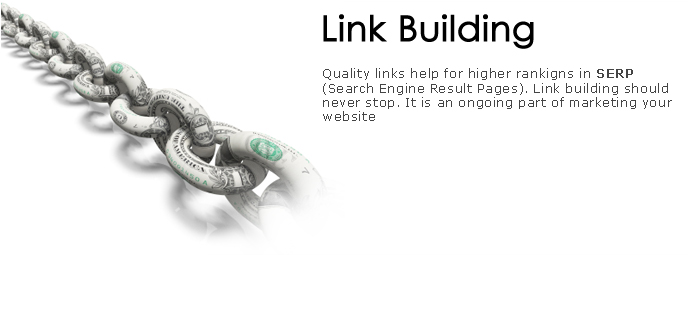How To Change A Site’s Title & Description For Better Search Results.
Google creates an automated titles and descriptions (snippets) for a site, if the site doesn’t mention them in the Heading Tag of its HTML code; it takes into account both the content of a page as well as references to it that appears on the web.Google uses descriptive information in the META tag for each page, including number of different sources for this information. If a site doesn’t have META Tags information for its pages, Google uses public available information from DMOZ.
Lets see what Matt Cutts say about this!
A web page can improve the click-through rate using accurate META Description, but it won’t bang its ranking within search results. Google is user friendly, that is why it always prefers to display META Description of pages when available, because the “description” gives users a clear idea of the page content, or you can say it gives a clear idea about, what is the URL (webpage) is about. This directs them to good results faster and reduces the click-and-backtrack behavior that frustrates visitors and inflates web traffic metrics.
Google can’t manually change titles or snippets for individual site that is why it is using automated software, and always working to make them as relevant as possible.
If you want to improve the quality of the snippets displayed for your pages in search results, you can do it by providing informative META Descriptions for each of your web pages.
How to prevent search engines form displaying DMOZ data in search results for your site:
If you want to see your META Descriptions in the search results as quality snippets, and stop search engines to borrow them form Open Directory Project (DMOZ Data), then follow the META Tags I put down below.To prevent all search engines (that support the META tag) from using this information for the page's description, use the following:
<META name="robots" content="NOODP">
To specifically prevent Google from using this information for a page's description, use the following:
<META name="googlebot" content="NOODP">
If you use the robots META tag for other directives, you can combine those. For instance:
<META name="googlebot" content="NOODP, nofollow">
How To Create Good META Descriptions:
Here is a source form Google Webmaster Tools that will guide you in making Good META Description.The HTML suggestions page in Webmaster Tools lists pages where Google has detected missing or problematic META descriptions. (To see this page, click Diagnostics in the left-hand menu of the site Dashboard. Then click HTML suggestions.)
Differentiate the descriptions for different pages. Using identical or similar descriptions on every page of a site isn't very helpful when individual pages appear in the web results. In these cases we're less likely to display the boilerplate text. Wherever possible, create descriptions that accurately describe the specific page. Use site-level descriptions on the main home page or other aggregation pages, and use page-level descriptions everywhere else. If you don't have time to create a description for every single page, try to prioritize your content: At the very least, create a description for the critical URLs like your home page and popular pages.
Include clearly tagged facts in the description. The META description doesn't just have to be in sentence format; it's also a great place to include structured data about the page. For example, news or blog postings can list the author, date of publication, or byline information. This can give potential visitors very relevant information that might not be displayed in the snippet otherwise. Similarly, product pages might have the key bits of information - price, age, manufacturer - scattered throughout a page. A good META description can bring all this data together. For example, the following META description provides detailed information about a book.
<META name="Description" content="Author: A.N. Author,
Illustrator: P. Picture, Category: Books, Price: $17.99,
Length: 784 pages">
In this example, information is clearly tagged and separated.
Programmatically generate descriptions: For some sites, like news media sources, generating an accurate and unique description for each page is easy: since each article is hand-written, it takes minimal effort to also add a one-sentence description. For larger database-driven sites, like product aggregators, hand-written descriptions can be impossible. In the latter case, however, programmatic generation of the descriptions can be appropriate and are encouraged. Good descriptions are human-readable and diverse, as we talked about in the first point above. The page-specific data we mentioned in the second point is a good candidate for programmatic generation. Keep in mind that META descriptions comprised of long strings of keywords don't give users a clear idea of the page's content, and are less likely to be displayed in place of a regular snippet.
Use quality descriptions: Finally, make sure your descriptions are truly descriptive. Because the META descriptions aren't displayed in the pages the user sees, it's easy to let this content slide. But high-quality descriptions can be displayed in Google's search results, and can go a long way to improving the quality and quantity of your search traffic.
How To Create Descriptive Page Titles:
Here is a source form Google Webmaster Tools that will guide you in making Good Descriptive Page Titles.Make sure that each page on your site has a useful and descriptive page title (contained within the title tags). If a title tag is missing, or if the same title tag is used for many different pages, Google may use other text we find on the page. The HTML suggestions page in Webmaster Tools lists pages where Google has detected missing or problematic title tags. (To see this page, click Diagnostics in the left-hand menu of the site Dashboard. Then click HTML suggestions.








9 comments:
Ace Creative Webtech PVT LTD
SEO companies promise to increase your traffic greatly by ensuring that when people search for related topics your site comes up in the top few results.
I am starting my website before some days. I want to more traffic for my website. So is there any seo companies? If yes then please tell me.
seo companies
Great post...thanks for the reminder to blog about the everyday things that people want to read. As a real estate agent, I
too struggle with what to blog about. Thanks!
Small Business SEO
It's been a pleasure reading your blog. I have bookmarked your website so that I can come back & read more in the future as well.
Resources like the one you mentioned here will be very useful to me! web design India I will post a link to this page on my blog. I am sure my visitors will find that very useful.
Great work. You were able to explain Meta tags very simply and helped me understand their importance. I found your page looking for the Best PPC Company for my business, but glad I stumbled across this for use on my blog. thanks!
great post thanks for sharing great
I work mostly with ppc ads and was wondering if we should be using the same keywords for our ppc ads as we are meta tags. Or would it be better to save our meta tags for organic search and use slightlty different ppc terms to maximize your reach? Thanks
Post a Comment
Don't try to spam.